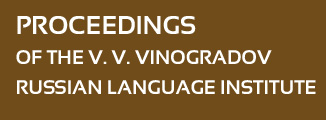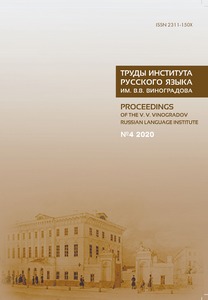COMPLEX CASES OF IDENTIFICATION OF OLD RUSSIAN UNCIAL HANDWRITING AND THE PROBLEM OF RELATIVE DATING OF CODICES CREATED BY ONE SCRIBE
Abstract:
The fi rst part of the article analyzes the changes in the scribal skills of the famous Pskov scribe Kozma Popovich, which are found in three codices he copied (Service Hexaemeron 1312 (Typ. 76), Paroemiarion 1312–1313 (Typ. 61 and Syn. 172), Prologue for September–February 1313 (Syn. 239)). The paper also makes an assumption about the relative dating of the fourth codex — Prologue for March–August (Typ. 177). The second part of the article is devoted to another scribe who worked with Kozma on the Codex Typ. 177 (pp. 123–127). In addition to the fragment of the Prologue for March August, his handwriting is represented in fi ve more handwritten books, one of which has an exact date of creation: these are the Service Menaions for February, July, August, and October (Typ. 105, Typ. 123, Typ. 127, and Typ. 90, respectively), stored in the Russian State Archives of Ancient Documents (RGADA), as well as the Liturgicon of the Russian National Library Q.п.I.67 of 1316 or 1317. Unlike in the case of the Prologue Typ. 177 the scribe worked on the other manuscripts independently (or with minimal participation of other copyists — Menaion Typ. 105). The paleographic features of the listed codices allow us to judge their relative dating.


